By Jean-Philippe Launberg, and in partnership with Escopo Automotivo.
Despite a severe market downturn, there are 3 products doing really well in the Brazilian market nowadays. Two ― the Honda HR-V and the Jeep Renegade ― are “no brainers”: Small Crossover sales are increasing (as in every other major market) despite an overall market drop of roughly 50% over the last two years. The third, FIAT’s Toro (Bull, in Italian), is more of a surprise.
The Toro is FIAT’s first modern Pickup, and it was launched in Brazil early this year. It’s the brand’s largest and most expensive locally-made vehicle. It is also a kind of “tweener”: a Crossover Pickup.

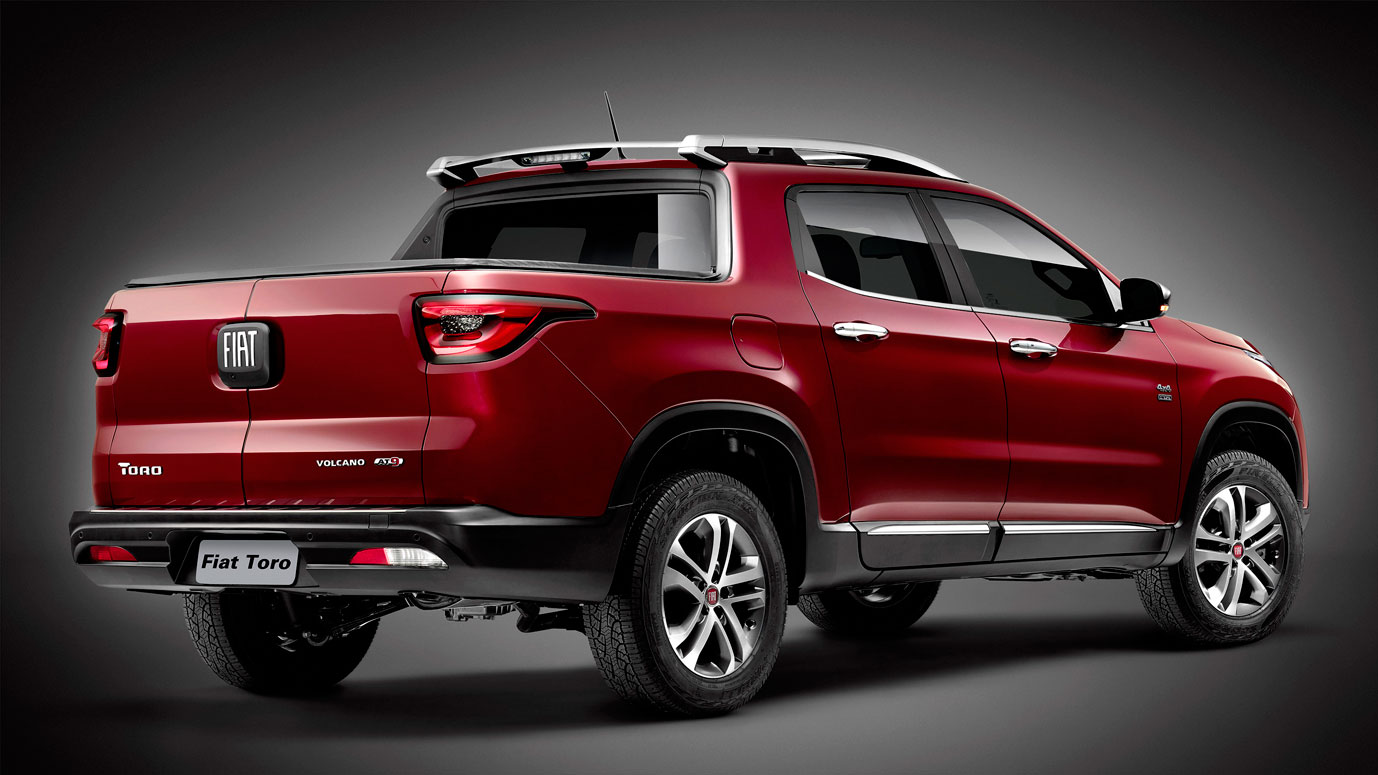 In size, the Toro is a Compact Pickup. It’s significantly larger than the traditional (in Brazil) car-based Small Pickups, such as FIAT’s own Strada (which has dominated its segment the past few years), but also substantially smaller than the typical Midsize Pickup, such as Chevrolet’s S-10 (a close relative to the USA’s Chevrolet Colorado).
In size, the Toro is a Compact Pickup. It’s significantly larger than the traditional (in Brazil) car-based Small Pickups, such as FIAT’s own Strada (which has dominated its segment the past few years), but also substantially smaller than the typical Midsize Pickup, such as Chevrolet’s S-10 (a close relative to the USA’s Chevrolet Colorado).
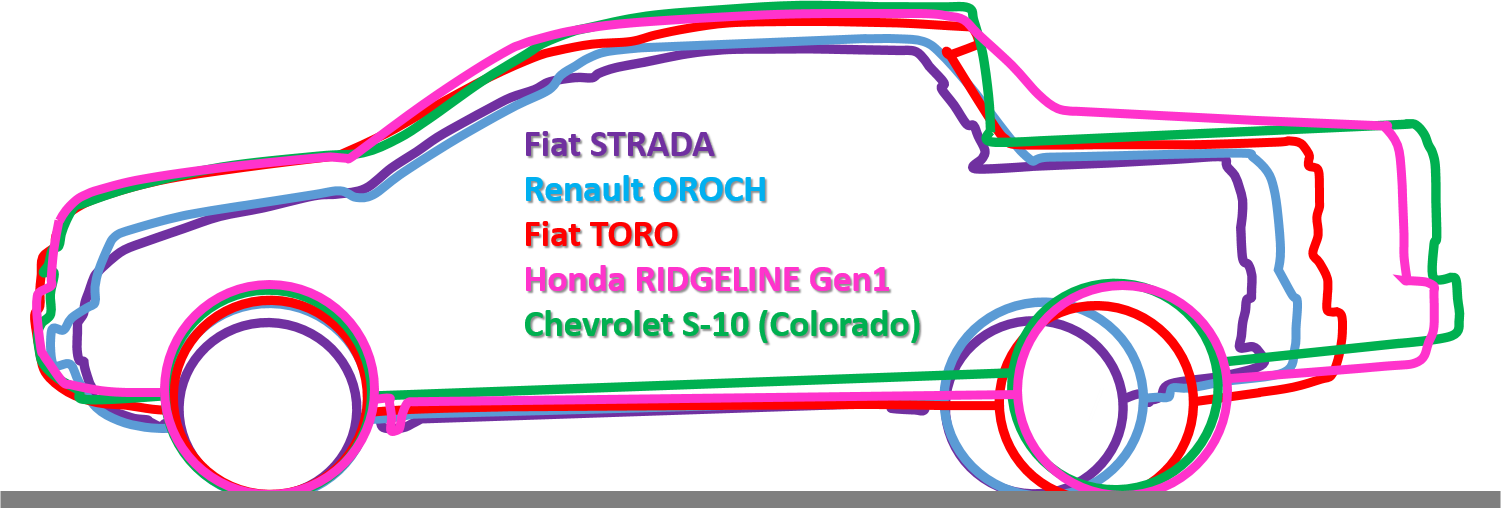
recently-launched Compact Pickup is significantly smaller.
FIAT intends to capture a substantial share of buyers ― especially the “recreational” ones ― from Midsize Pickups, and it seems to be on the right track. There are rumors that a Single Cab, with a larger cargo volume and higher payload rating, will arrive later on with an eye on (urban) “business” customers. It is also not such a big step up in price from Small Pickups, but much roomier and nicer to drive. As a result, so far the Toro is drawing customers from both and is not selling more just because the plant can’t keep up; the waiting list (especially for the pricier versions) stands at between 3 and 4 months.
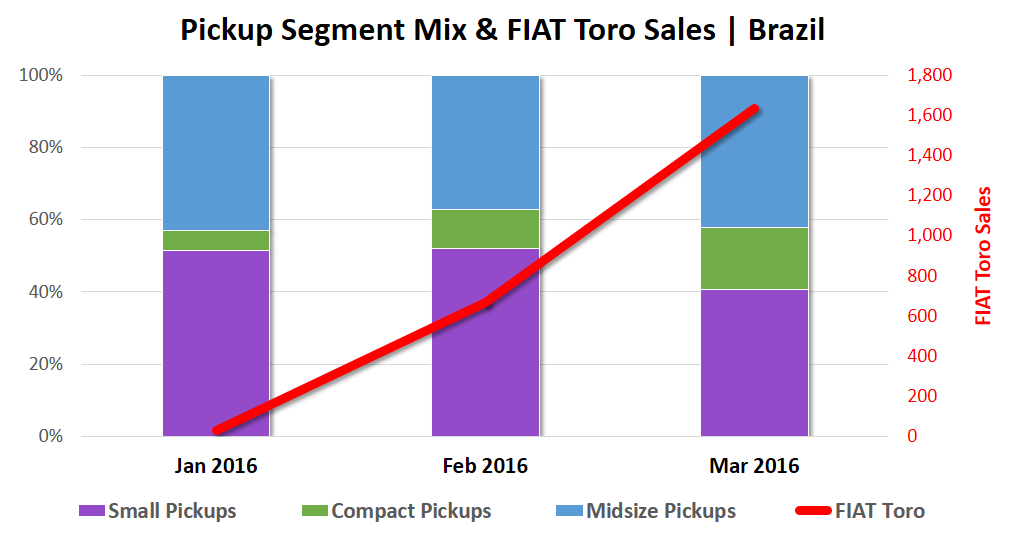
The Toro is built on a unibody structure, rides on an independent rear suspension, and is primarily a front-wheel driver although all-wheel-drive is available. It is no coincidence that these are features normally associated with passenger cars, rather than Midsize Pickups (Body-on-Frame construction, solid rear axle and standard rear-wheel-drive), as the Toro is built on a modified Jeep Renegade platform … and comes off the same brand-new plant in Northeastern Brazil. These attributes define the Toro, its intended customer set, and lends it its Selling Points.

The only similarly-built and -purposed Pickups I am aware of are the Honda Ridgeline (which has been around since 2009, and will get a new generation this year) and the recently-launched Renault/Dacia Oroch. Soon, the Hyundai Santa Cruz will join the party.


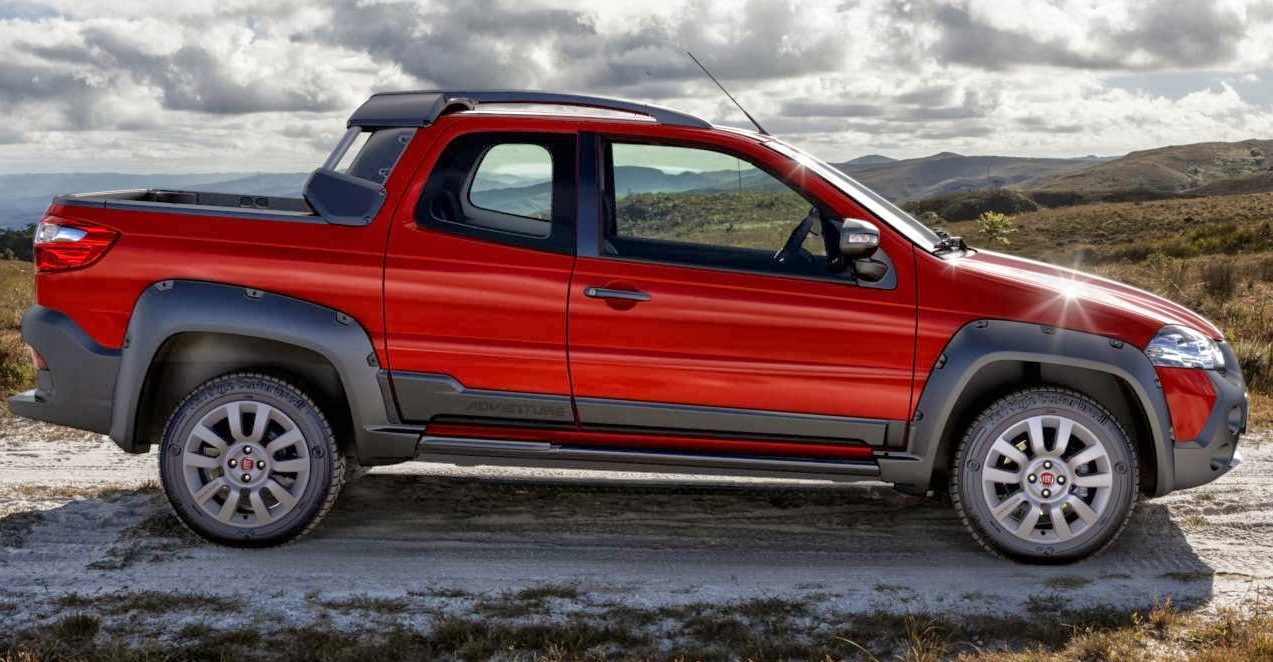

As the Ridgeline, the Toro is not designed for extreme work such as towing a large boat, carrying worker crews and gear to remote off-road locations … or herding cattle through pasture land like some Brazilian farmers do.
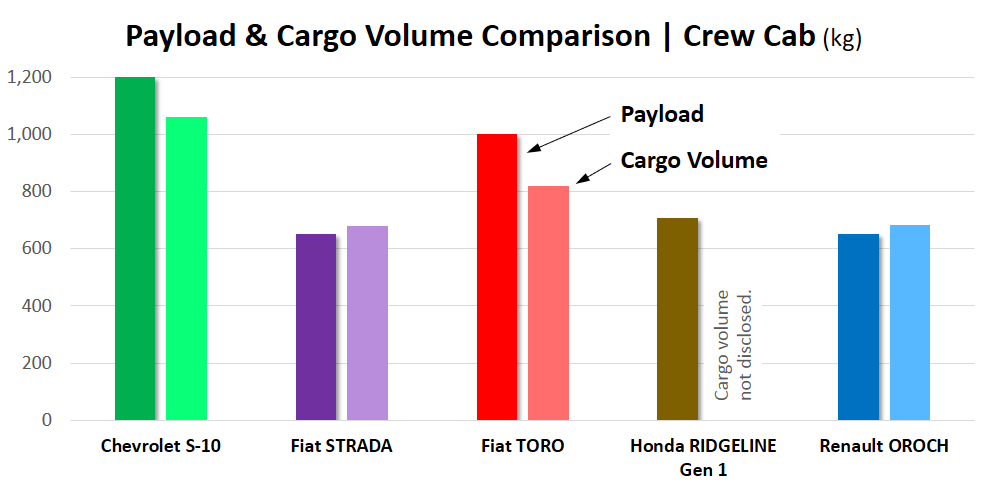
What it does best is to brave ― as comfortably as Crossover ― the aggressive bumper-to-bumper traffic and badly-surfaced roads of large Emerging Market cities on the weekdays, and on the weekends capably transport mountain bikes, surfboards, camping gear, king-size beverage coolers and 4 people (though it is a certified 5-seater) to that deserted beach only accessible through dirt and sand tracks.
In a nutshell, it covers most uses (with the help of a bed extender) of a traditional Midsize Pickup, while retaining most of the comfort, convenience, drivability and running costs of a Compact Crossover, and a good one at that.
I have sampled a near top-of-the-line Toro with the 2.0-liter (170 hp) MultiJet diesel engine, AWD and Volcano trim. The 350 Nm (258 lb.ft) available low down in the rev range, in combination with the 9-speed ZF automatic transmission, easily launch and accelerate the Toro. As reference, FIAT quotes a 9.5-10 sec for the 0-100 km/h (roughly 9-9.5 sec 0-60 mph) depending on the transmission. The engine is well isolated, sparing the occupants from most of the diesel’s idle noise and vibration. Even when extended to around 4,000 rpm, the engine is neither loud (windows were closed) or harsh. It’s a responsive powertrain that lends itself well to the daily urban grind. There is no reason to doubt it will be a pleasant partner also on the highway, or when “working”. Certainly it is a much better (though expensive) alternative to the lackluster base 1.8-liter (1.8-liter) E-TorQ petrol engine, which despite the name lacks enough low and mid-range pulling power to move the Toro with anything approaching verve. I haven’t tried it, but the Brazilian press and blogs have been talking about it since it was installed the the approximately 150 kg (330 lb) lighter Jeep Renegade.
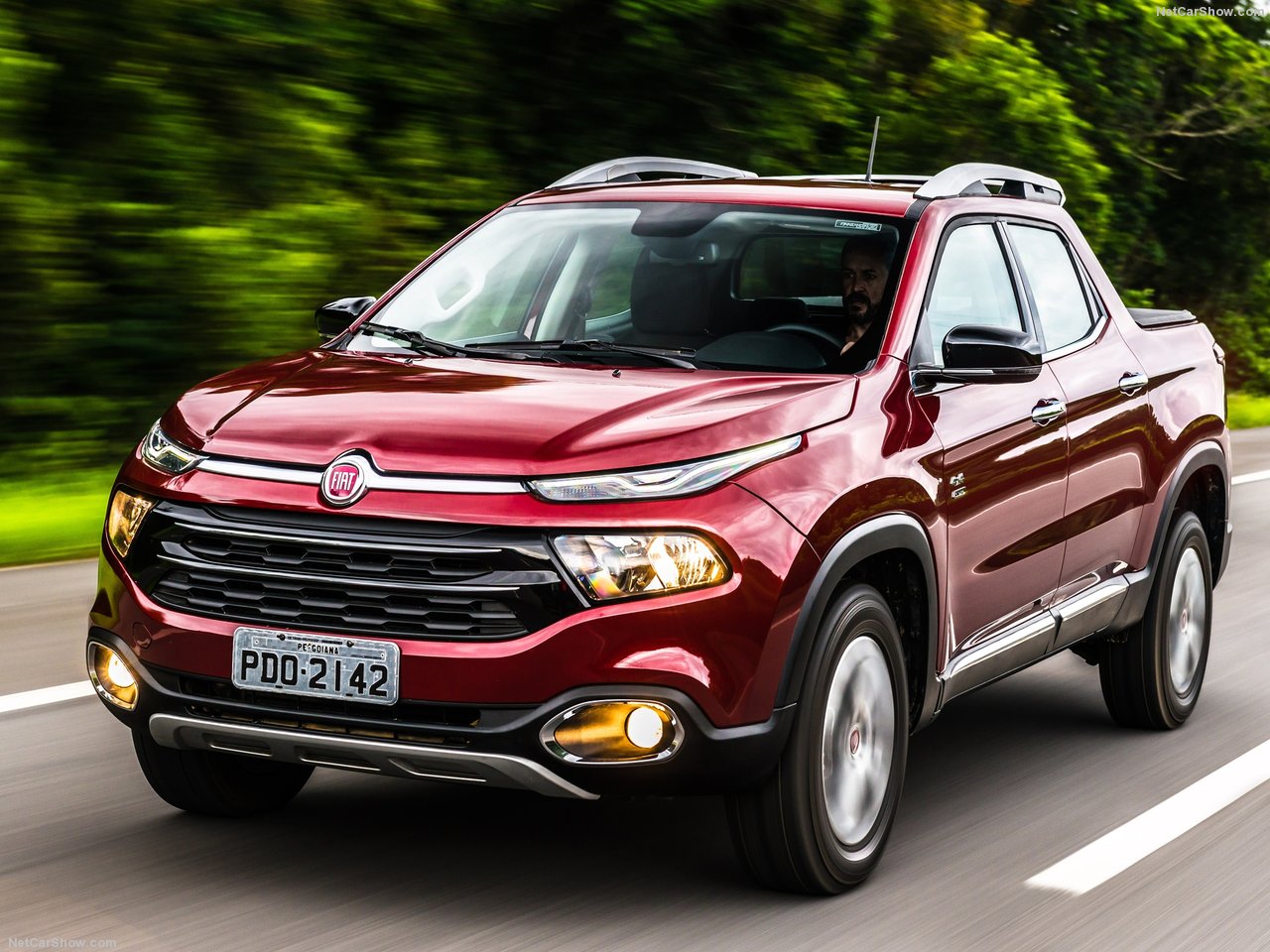
Driving down the road I feels like in a modern crossover: the ride is compliant but not too soft (courtesy of the long suspension travel and generous tire sidewall), the body movements are well-checked and the cab is settled despite the Toro being unladen (courtesy of that independent multi-link rear suspension), quite unlike that typical Body-on-Frame and solid rear axle pickup jiggle. If my eyes were closed, I would never have guessed I was driving a pickup truck; it’s all very composed.

The interior is less impressive. Although front row room is quite adequate in all directions, and there are all the essential comfort, convenience and safety features, it is all rather dark and gloomy (the optional sunroof may address this to some extent, but was not present on the test vehicle). The only pieces of trim to brighten it up a little are the air vents surround panels and the doors pull-handles, which for the Volcano trim are painted reddish-brown, supposedly the color of volcano lava. I don’t like them at all. Lesser trim levels get other finishes, such as body-color and satin-chrome; in my opinion they look better. The Renegade, as a reference, is more tasteful and has better perceived-quality plastics, including some soft-touch. That said, the Toro is well-assembled and finished.
 Another point of complaint for me is the rear bench seat. It is wide enough to squeeze an eventual fifth passenger, but the seat back angle is closer to the vertical than usual on passenger cars, preventing me from getting really comfortable, and pushing me forward in the cushion to the detriment of knee clearance. Many other pickups have the same characteristic, so I would guess FIAT did so to maximize cargo volume headline at the expense of comfort on longer trips (i.e. to that deserted beach). Trade-offs have to be made!
Another point of complaint for me is the rear bench seat. It is wide enough to squeeze an eventual fifth passenger, but the seat back angle is closer to the vertical than usual on passenger cars, preventing me from getting really comfortable, and pushing me forward in the cushion to the detriment of knee clearance. Many other pickups have the same characteristic, so I would guess FIAT did so to maximize cargo volume headline at the expense of comfort on longer trips (i.e. to that deserted beach). Trade-offs have to be made!
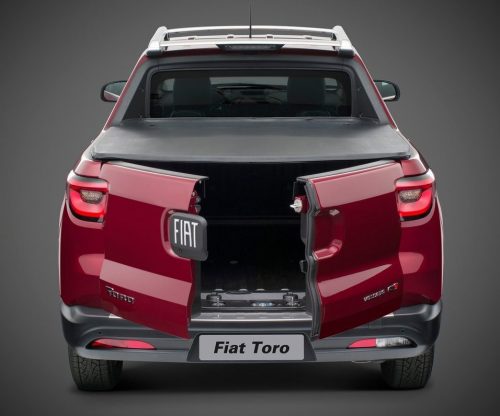
What will make the weekend trips easier are are the (power locked and reverse camera-fitted) split side-hinged tailgate and optional tonneau cover. The former allowed me to reach deep into the bed without having to climb in, making loading and unloading very convenient, and the latter provides security and peace of mind when parking the vehicle with (not so large) items in the back.
I didn’t spend time on the infotainment system, because it seemed quite average. The touchscreen is rather small (looks like 5.5 in) and it offers the basic features of hands-free phone operation, navigation system, a rear camera screen and other minor features. I believe most will expect more, at least on the higher trims.
Summing It All Up
The Toro is a very fine effort from FCA. It found a unique market positioning and has for all purposes no direct competitors; the Renault Oroch is more of a largish Small Pickup than a true Compact, and is much less sophisticated. Most importantly, the Toro offers a clear and appealing value-proposition: a vehicle that drives and feels like a crossover, and is almost as capable (for the great majority of usages) as a Midsize Pickup, and costs only a fraction of the latter to buy and run. Oh, and it does look quite good in the metal as well: sleek and muscular at the same time. In a market where design (within segment choices, of course) is by far the most influential purchase driver, a quick look from those squinting LED bull’s eyes might prove to be the “cherry-on-the-cake”.

As it is built on an extended Jeep Renegade platform, it shouldn’t be too much work to make the Toro certifiable for the USA and EU markets. How would you rate its potential, if priced similarly?
Pictures and technical information from manufacturers, Google Image and NetCarShow.com

